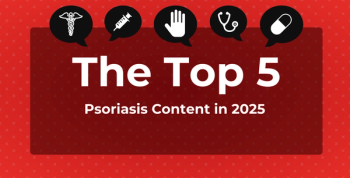
Real-World Data Highlight Efficacy, Safety of Combination Treatment for Chronic Migraine
A combination of onabotulinumtoxinA and a calcitonin gene-related peptide monoclonal antibody appears effective and safe in patients with chronic migraine, according to real-world data.
Results of a real-world study revealed onabotulinumtoxinA was effective in reducing monthly
Approximately 1% to 2% of the world’s population suffers from chronic migraine (CM), and these patients often experience debilitating attacks that can prevent them from performing daily activities.
Previous research has shown lifestyle modifications, trigger and comorbidity management, and appropriate acute and preventive pharmacological treatments can all help manage the condition.
OnabotulinumtoxinA was first approved in 2010 as a preventive migraine treatment and “in 2018, 3 subcutaneously injected mAbs directed against CGRP or its receptor were approved by the US FDA for migraine prevention,” the authors wrote.
However, patients who benefit from treatment with onabotulinumtoxinA may continue to experience migraine attacks warranting additional preventive treatments.
As no randomized controlled trials evaluating the safety and efficacy of the combination of onabotulinumtoxinA and CGRP mAbs exist, the researchers assessed real-world data from electronic medical records (EMRs) of individuals treated with up to 12 months of continuous combination treatment at the DENT Headache Center in Buffalo, New York.
All patients received the combination treatment between June 2018 and March 2020 while “a baseline period of 1 to 3 months prior to index was used to assess the effectiveness of onabotulinumtoxinA treatment monotherapy,” the researchers said.
A total of 148 individuals with a mean (SD) age of 46.9 (11.5) years were included in the study. The majority (93.2%) were female, and patients typically began treatment with a CGRP mAb approximately 2.6 years after starting onabotulinumtoxinA for CM. Of the patients who received an mAb, 56.7% were prescribed erenumab, 42.6% were prescribed fremanezumab, and 0.7% were prescribed galcanezumab.
Analyses revealed:
- Mean MHD were 20.4 (6.6) prior to onabotulinumtoxinA treatment and 14 (6.9) prior to the addition of a CGRP mAb at baseline
- After real-world addition of a CGRP mAb, there were significant reductions in MHD at the first assessment (~3 months) (mean −2.6 days/month; 95% CI, −3.7 to −1.4) and at all subsequent visits
- After approximately 12 months of continuous combination treatment, MHD were reduced by 4.6 days/month (95% CI, −6.7 to −2.5) and 34.9% of patients achieved ≥50% MHD reduction from index
- Adverse events (AEs) were reported by 18 patients (12.2%), with the most common being constipation (n = 8; 5.4% [onabotulinumtoxinA plus erenumab only]) and injection-site reactions (n = 5; 3.4%)
- No serious AEs were reported
Ninety patients (60.8%) discontinued one or both treatments, with the most common reason for discontinuing either treatment reported as lack of insurance coverage or lack of effect. “Few (~14%) patients discontinued a CGRP mAb and none discontinued onabotulinumtoxinA due to safety/tolerability,” the authors wrote.
Based on the findings, they suggest payers examine the cost-to-benefit ratio of treatment options for patients with CM.
Some data assessed in the current analysis were incomplete, which could introduce bias, marking a limitation to the study. Study outcome measures were also not consistently reported and consistency of treatment with both medications could have varied between patients.
“Additional real-world studies and prospective controlled trials are needed to further assess the safety and additive or synergistic benefits of the addition of a CGRP mAb to onabotulinumtoxinA treatment for people with CM,” the researchers concluded.
Reference
Mechtler L, Saikali N, McVige J, Hughes O, Traut A, Adams AM. Real-world evidence for the safety and efficacy of CGRP monoclonal antibody therapy added to onabotulinumtoxinA treatment for migraine prevention in adult patients with chronic migraine. Front Neurol. Published online January 6, 2022. doi:10.3389/fneur.2021.788159
Newsletter
Stay ahead of policy, cost, and value—subscribe to AJMC for expert insights at the intersection of clinical care and health economics.








































